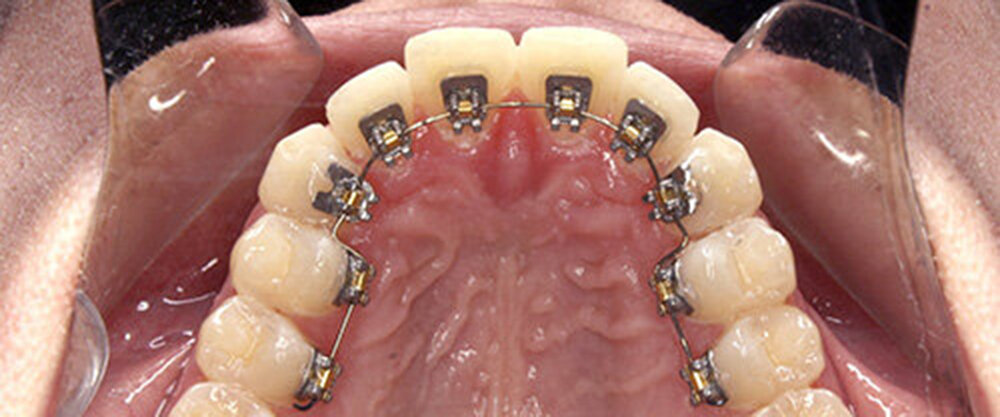
Lingual braces are a type of orthodontic treatment that is designed to be less visible than traditional braces. Unlike traditional braces, which are attached to the front of the teeth, lingual braces are attached to the back of the teeth, making them nearly invisible when you talk, smile, or laugh. This can be especially appealing to adults or teenagers who are self-conscious about their appearance and don’t want their braces to be noticeable.

There are several advantages to lingual braces. First and foremost, they are much less visible than traditional braces, making them an attractive option for people who are concerned about the appearance of their teeth during treatment. In addition, lingual braces can be more comfortable than traditional braces because they don’t rub against the inside of the lips and cheeks like traditional braces can.
Lingual braces are made from the same materials as traditional braces, including brackets and wire. The brackets are custom-made for each patient and are attached to the back of the teeth using special bonding cement. The wire is then attached to the brackets and tightened over time to gradually move the teeth into their proper position.
Treatment with lingual braces typically takes the same amount of time as treatment with traditional braces, but it may require more frequent visits to the orthodontist. This is because the brackets are more difficult to adjust and the wire can be more challenging to work with. Additionally, lingual braces may be more expensive than traditional braces because they require more specialized training and equipment.
Despite these challenges, many people find that the benefits of lingual braces outweigh the drawbacks. If you’re interested in getting lingual braces, the first step is to schedule a consultation with an orthodontist. During the consultation, the orthodontist will examine your teeth and discuss your treatment options with you. They will also take X-rays and impressions of your teeth to create a customized treatment plan.
It’s important to note that lingual braces may not be suitable for everyone. Some people may have teeth that are too small or too large to accommodate lingual braces, or they may have other conditions that make treatment with lingual braces more difficult. Your orthodontist will be able to tell you if lingual braces are a good option for you based on your specific needs and goals.
In conclusion, lingual braces are a popular orthodontic treatment option for people who want to straighten their teeth without drawing attention to their braces. They offer many of the same benefits as traditional braces but are less visible and may be more comfortable for some people. If you’re considering lingual braces in Singapore, be prepared for potentially more frequent visits to the orthodontist and a higher cost, but many people find that the benefits of this treatment outweigh these drawbacks.






